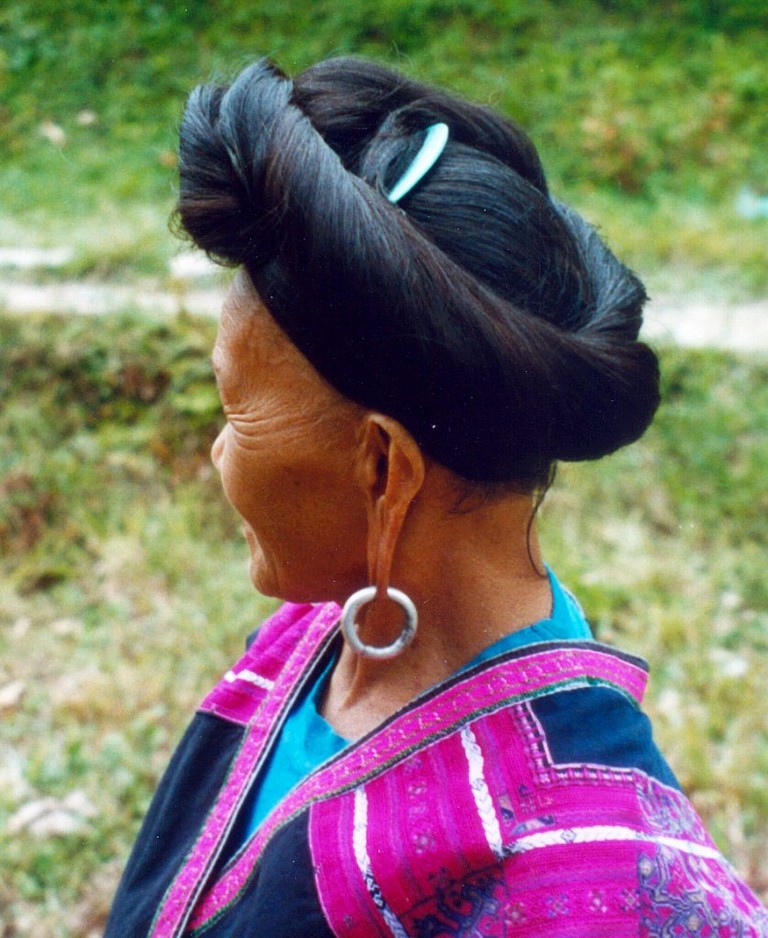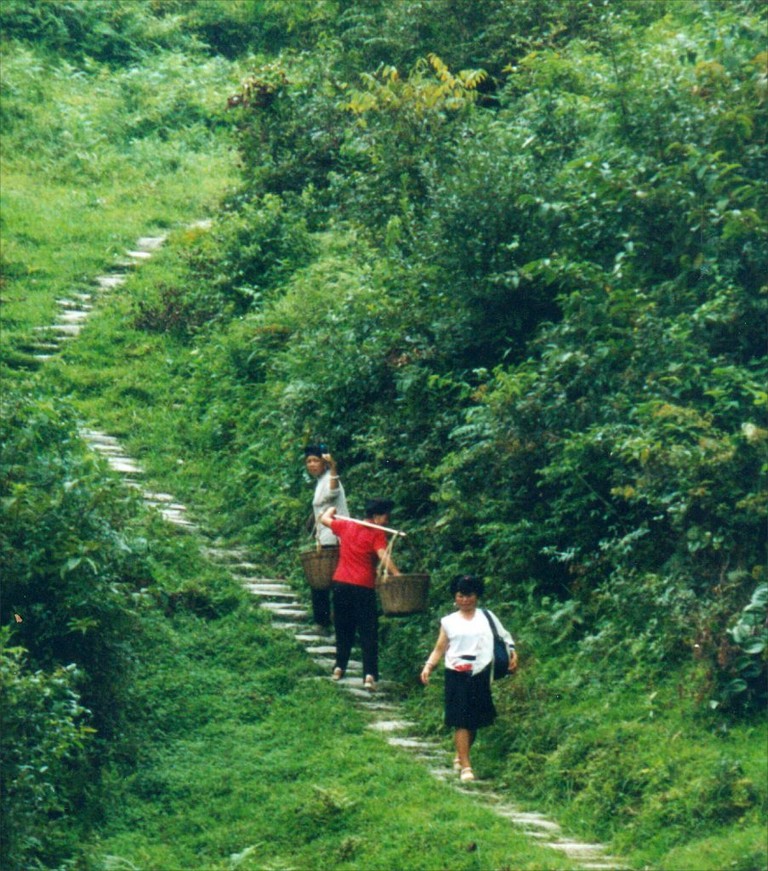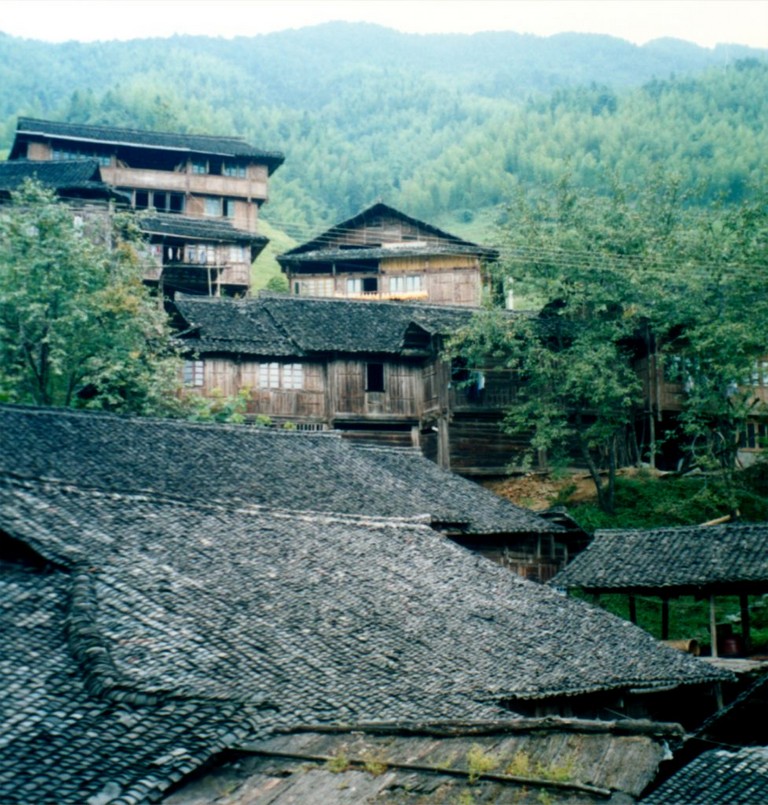Longji Titian or Dragon’s Backbone Rice Terraces 龙脊梯田

The Longsheng Rice Terraces are a real marvel. These stunning rice terraces also known as the Dragon’s Backbone Rice Terraces offer travellers a great opportunity to do some hiking and visit some fascinating minority villages. The main ethnic group here are the Zhuang, but there are also a number of Yao villages in the area.

Many of the Yao ladies still wear traditional, colourful clothes and heavy jewellery and they pride themselves on their hair, which may well be some of the longest you’ll ever see.

The Zhuang Village of Ping’an is the main village of the area, as well as the most easily accessible.

It’s is a pretty collection of wooden houses, connected by stone paths and set right in the middle of the rice terraces. When we were there, a new road was being built and a couple of new hotels were under construction, fortunately in traditional style.The Longsheng Rice Terraces:

The Longsheng Rice Terraces: Hiking

Many small paths leave from the village, going off in all directions. One of the nicest is to head up above Ping’an and walk around the high ridge, passing smaller settlements which offer spectacular views over the terraces. The contrast between the green rice paddies and the ubiquitous red chillies adds to the beauty.

The Longsheng Rice Terraces: Minority Villages
The walk from Ping’an to Dazai village makes for a great day trip. According to locals, the rice terraces at Dazai are even more impressive than those around Ping’an but, unfortunately, we never got to see them.

We were heading in that direction when we were waylaid by a local Yao lady who insisted on taking us to her village, about two thirds of the way to Dazai, for lunch.

The Longsheng Rice Terraces: Kidnapped for lunch goodbye Dazai

Most of the meal she picked straight from the mountainside and the bushes along the path, as she escorted us to her house, a large, rambling wooden structure on stilts.

Here we squatted on low wooden benches, scrutinised by the curious members of her family and with chickens pecking at our feet, while the lady prepared our lunch, for which we had agreed to pay 30 Yuan.

The food was not bad at all, especially the wild mountain vegetables. After lunch, we went for a walk around the village, which was very poor indeed.

Though the houses were huge, they were virtually empty, with only the most rudimentary cooking and farming implements.

Moreover, the streets and the open spaces underneath the houses were filthy and covered in garbage. The wealth gap between the richer Zhuang villages, such as Ping’an, and the poorer Yao villages was quite evident.

Such was our delay over lunch that we decided not to push on to Dazai. This turned out to be a wise decision because, just as we were arriving at Ping’an, a huge summer storm engulfed the entire rice terraces and the torrential rain didn’t remit until late the following day.

However, for those who wish to do the whole walk, the stone path is quite easy to follow and extremely attractive, passing through deep forest, beautiful flowery meadows and, of course, plenty of rice terraces.

Practicalities:

Accommodation and food:
We stayed and ate in a small family-run hotel in Ping’an, aptly called the Ping’an hotel. It had clean rooms, a nice dining room and veranda and shared bathrooms, all for 25 Yuan a night.

There were already several such hostels in Ping’an and more were going up all the time. Entrepreneurs from as far away as Yangshuo had started competing with the local family hotels.

We found that at weekends, the place was very popular with Chinese tourists from Guilin who enjoyed large, rowdy dinner parties and played cards until deep into the night. (see the article on the degradation of the Longji rice terraces).

At the time, Ping’an was the only village with accommodation, though nowadays Dazai 大寨, and other villages such as Tiantouzhai 田头寨, have guesthouses and hotels too; some with amazing views.

Transport:
Small buses run regularly throughout the day from the bus station at Longsheng to the parking area, a 20 minute walk from Ping’an village.
In 2003 all vehicles had to be left here and an entry ticket to the whole rice terrace area had to be purchased. All this may now have changed, as the new road we saw being constructed, was meant to go right up to the village.

Guilin to Longji High Speed
Guilin is now firmly on the high speed network so getting to the Longsheng Rice Terraces is pretty easy.
It still takes around 2.5 hours by bus from Guilin to the terraces and you still have to walk the last part if you come by local bus from Guilin.
Onward Travel: It takes about 2 hours from Longsheng to reach Songjiang and then another 20 or 30 minutes to get to Chengyang and its marvellous bridges.
